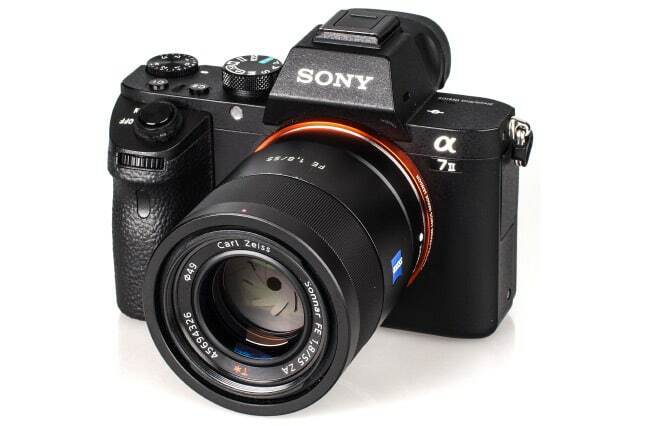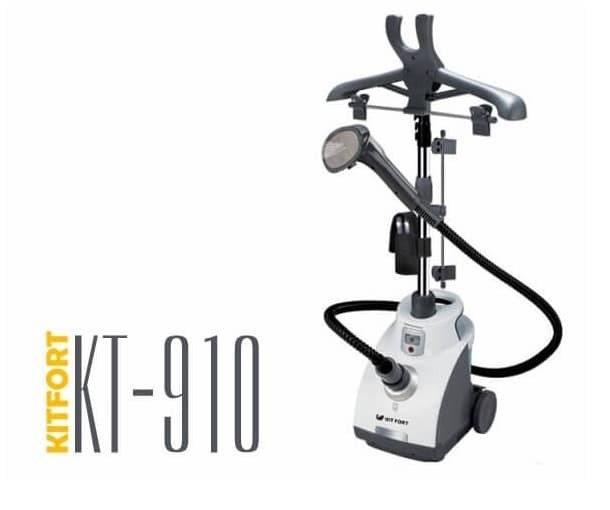Heating equipment, mounted on a wall and the ceiling, including portable heaters in certain extent is an integral part of the interior in need of decoration and is engaged in some room volume.
With the development of heaters on the market of heating equipment production technology units were not reducing the useful volume of space - heating convectors, flush recessed into the floor.

Underfloor heating convectors are widely demanded in large administrative and residential buildings with enclosing structures made of glass, as well as public buildings Transit use (corridors, passages, waiting rooms), where they are not rushing to the eyes, effectively fulfill its purpose - to maintain the required temperature mode.

The general idea of the floor-mounted convectors
Simplistically floor duct convectors are solid rectangular body, often carcass performance, steering the front side of the metal grating decorative performance. The housing is a heat exchanger, a heating, depending on the type of heating device, a circulating coolant thereon or an electric heater.

Underfloor heating convectors are installed in separate or common point of linear recesses, formed in the carrier semi-size heaters, as well as in the space between the raised floor and the concrete base. For reduction of heat loss and the lower side wall of the housing outer convectors equipped with thermal insulation.
The design of such heaters are provided adjusting screws, to fine-adjust the horizontal position Front lattice plane to the level of floor finish to the protruding portion of the housing do not hinder walking on them.

For more efficient use of floor-mounted heaters placed along the glass walling panoramic execution and window openings, to use the convection currents and more as a thermal curtain between the space of the room and a cold surface glazing.

Forms embedded in floor heaters
Underfloor heaters models now produced a lot, and they all are somewhat different from each other. If you do not consider the parameters that are of secondary importance, all embedded in floor thickness convector heating can be divided into two groups:
- water;
- electric.
Units within each of the two groups differ in dimensions, configuration, power, performance outer lattice type convection - natural or forced (fan) and the class performance.
Water heaters internal floor accommodation
Water underfloor convector - heating device, connected to the central system or auxiliary heating.

At the point of connection to the system is installed the valve, which can adjust the amount of coolant circulating through the outdoor water heater.
The main element is a radiator unit with inlet and outlet fittings, through which via flexible hoses or fittings used to connect to the heating system and the hot water circulation takes place through heat exchanger.

The radiator is made of copper pipe in which to increase the heat transfer area formed aluminum fins. Modern water heating convectors are equipped with an automatic air vent valve, entering the system along with the water that eliminates the formation of air pockets, and allows efficient operation of the unit due to the stable circulation intensity coolant.

The intensity of the heat supply in the convector can manually change the valve at the point of connection to the heating system, but effectively set at entering the heater mechanical thermostat regulating the flow of hot water to the heat exchanger depending on the water temperature radiator.

Recessed floor heaters with natural convection type designed for space heating medium size (16-25 m.).
To provide natural movement of the body duct convective currents depth should be at least 20 cm, and yet even natural multi-tube unit convection type do not always cope with the role of the main and sole heating means, forcing nearly housing additionally use other heating instruments.

The main advantage of this group of underfloor heaters are safe, due to the absence of factors, concomitant use of electrical appliances. water heating convectors do not require grounding, are not afraid of direct contact with moisture (the floor is often), temperature the surface of these units to be safe for humans when the short touch and the outer grid can be made of a valuable species wood.

The cost of such devices depending on the capacity and technical equipment performance class, is in the range of 20 to 100 thousand. rub.
Important! When connected to a central heating system, heating convectors water, built into the floor - heaters that do not require energy costs (except for the model with a fan).
Water heating devices of forced convection type
Equipment of the appliance fan accelerates convective currents, but this reduces their temperature - less air is heated due to shorter duration of contact with the heat exchanger. Therefore radiators underfloor heater with forced convection type performed more complex structure (two- three- chetyrohtrubnymi), length 3 meters, which prolongs the contact of air with the heat exchanger and increases its temperature at the outlet of unit.

Recessed into the floor heater with forced convection type many times more effective than models without a fan, so used premises of a large area, with power consumption of such devices due to the lack of electric heating elements small. However, the design complexity often used in modern heating systems, tangential fans (with low noise level, by operating the voltage of 12 V), or heater equipment of multiple venting mechanisms traditional diametrical type design significantly increases the cost of the convector, which can range from 50 to 160 thousand. rub.

Heat capacity of the water heater is determined by the dimensions of the unit, flow temperature and the type of convection, but the required calorific value (Qt) is determined by a special formula:

However, the required heat capacity also depends on other factors - region, size of room, glass area, the degree of thermal protection of protecting designs, etc., so most of its value is determined by means of special tables that take into account certain conditions operation.
Electric underfloor heating units
From water convectors these units differ in the way heat exchanger, and naturally structure.
The heat exchanger is a heater, placed in Finned Copus. Thus, electric heaters mounted in the floor - this is to some extent, infrared heaters, the basic principle of operation is based on convection.

The presence in the assembly of the electric heating element allows you to connect it to the automatic control system of heating, to minimize human involvement in the operation of the heater. For this purpose, the unit power supply circuit external mechanical thermostat is set, disabling the device after reaching the room temperature setpoint.
Important! Automatic temperature control is effective only when installing units with forced convection type, since fan ensures a uniform temperature in the room and temperature sensor allows you to capture the real her value.

All models are equipped with electric underfloor devices within a temperature sensor which protects the heater from overheating.
Important! When mounting markup electric heaters away from the unit to the glazing plane must be performed no more than 300 mm - in excess this value, nothing will prevent the formation of condensate on the glass, which is flowing down onto the floor, may accumulate in the recess arrangement heater.
Ceiling height of most of the apartments does not allow safely pour a layer of concrete floor, allowing drown underfloor heater. Stroebe floor intermediate floor at a depth too unrealistic. Therefore, the built-in electric floor and, moreover, the water heater can not be found in an apartment building conditions. But made similar in performance outdoor heaters that do not require the installation of mounting structures of niches in the floor.

Heating devices such as electric and water, can be effectively heat the spacious room apartments and household premises for production purposes.
Important! The use of electrical convectors due to the sensitive energy costs, but in this situation there is a way - use the network of direct current voltage of 24 V, which will not only reduce costs, but also improve the safety of operation of the heating unit.

Fancoils
On the basis of the floor-mounted convector made another type of heater is working not only for heating but also for cooling. On-site, except vnutripolnogo, they are as wall, floor and ceiling. Russian-language name of the unit - Heating - from the English fan-coil, means in the fan-coil.
Under this definition, it means the combination of the two devices, working in tandem:
- directly fancoil - mounted on the floor mechanism for influencing the temperature of the air, comprising one or more heat exchangers;
- chiller - separately installable unit for cooling supplied to the fan coil in summer coolant (water).
Fan coil units are single-circuit (two-pipe) and double-circuit (chetyrohtrubnymi).
In single circuit through the heat exchanger units in winter is forced hot water from a central heating system or antifreeze from the boiler. Summer through the same heat exchanger cold water passes from the unit - the device is not used for cooling the freon or other gas with similar characteristics.
The combi Fancoil movement of hot and cold coolant is carried over separate teplobmennikam.

Taki, depending on the set mode, the fan blows air through the room hot or cold heat exchanger.
Universal circuit installation system couples chiller-fan coils does not exist, its installation is possible in any room, but the installation of the project will be linked to specific conditions.
A properly sized for the chiller power may be connected to the system of many fan coil units (wall, ceiling, underfloor), serving several rooms and even buildings.
Such a system is to ensure the necessary temperature conditions in the premises is used primarily in civil and industrial buildings have been difficult to maintain and costly.
Advantages and disadvantages installed in the floor convectors
List the positive and negative features underfloor heaters without separation by type of energy carrier and employed transfer characteristics common to all the convectors in general.
Pros:
- by virtue of the location of the unit the heating is lower, the coldest air layers;
- installation of devices does not reduce the useful volume of the room;
- quick access to the operating mode;
- prevention of condensation on the glazing.
Minuses:
- at high ceiling embedded in the floor assemblies natural convection type not efficiently - convective heated air is highly concentrated on the ceiling and cool before filling the actual volume room;
- convection from the level of the floor covering initiates the intense movement of dust in the air, while the heater is always present in the air;
- inconvenience of daily care of niches in which collects household garbage.
conclusion
Mounted to the floor heaters convective type - perfect heaters not only heats space, but also creates a thermal curtain between the living room and the volume of sources of cold - glazed door openings. But their installation must be justified by the conditions of operation, rather than being an end in itself. Accommodation in the room underfloor heaters without technically reasonable justification will only lead to the presence of trash niches in which are embedded are not effective in this situation and therefore not used instruments.
The main essence of the article
- Underfloor accommodation household heaters - the most rational option heaters installed.
- Mounted to the floor heaters are divided into two main groups: water and electric. When selecting the optimal conditions for the existing heater is necessary to know the device and performance of both types of devices.
- Water convectors - economical, safe and effective heaters, thermostats possible hardware locking action.
- Electric heaters are installed in the floor, it can not be called energy-saving devices, but the transition to the use of a constant voltage of 24 V DC in effectively solves this problem.
- Heating - perfect thermal management units in the rooms, but due to the complexity and high cost of maintenance, almost never used in private housing.
- Using underfloor heaters in a small area or areas in the absence of the panoramic glazing is not justified.



